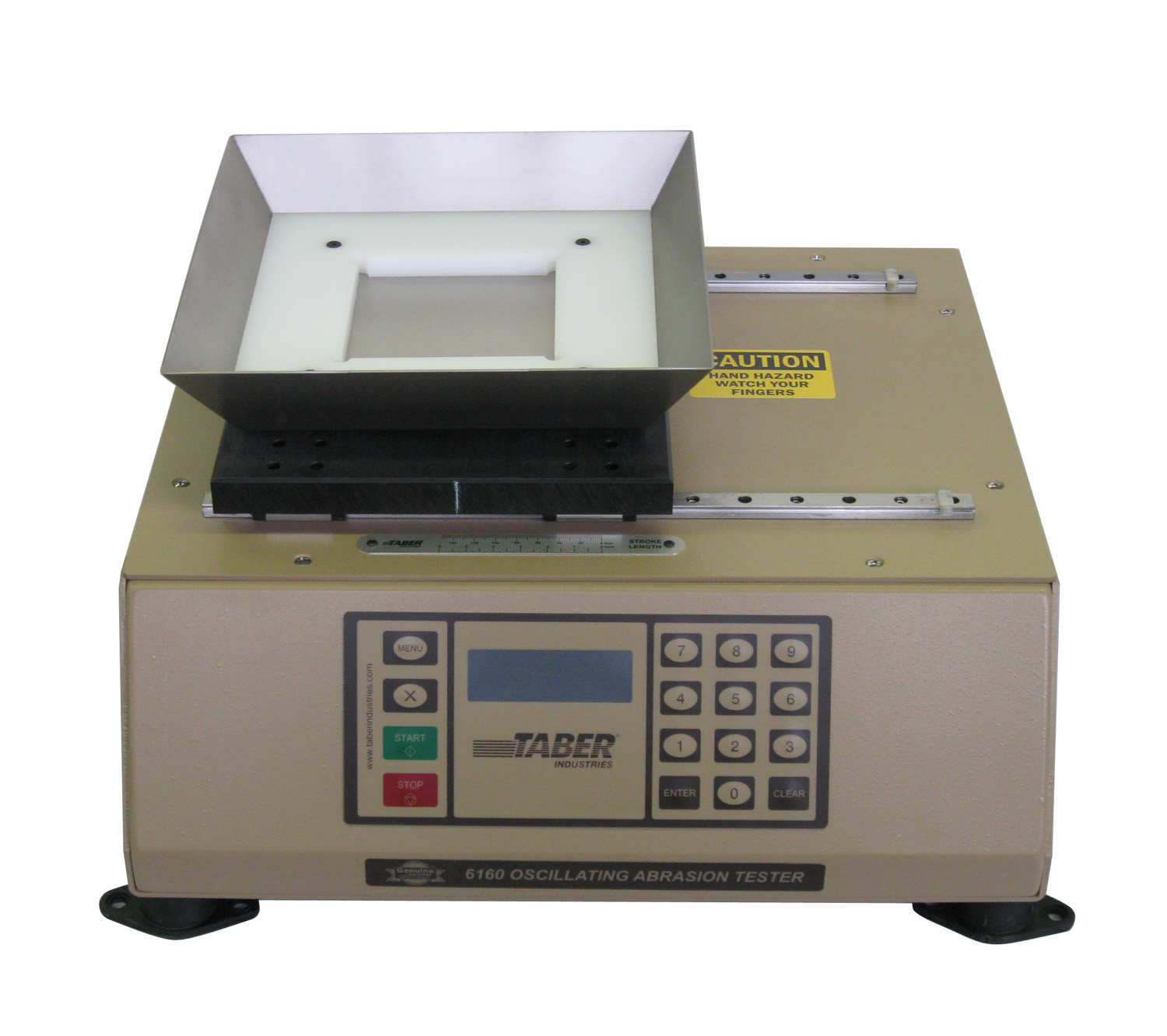Advanced Abrasion Testing Technology
The TABER® Oscillating Abrasion Tester – Model 6160 is best known as an “oscillating sand tester”. Described in ASTM F735 (Standard Test Method for Abrasion Resistance of Transparent Plastics and Coatings Using the Oscillating Sand Method), the oscillating sand tester is used to measure the relative abrasion resistance of a material to surface abrasion and / or marring.
Primary Applications
The primary application of the Oscillating Sand Abrasion Tester is for transparent materials and coatings utilized in windows and lenses, but it might also be used to evaluate organic paints & coatings, plastics, metals and other materials.
Test Procedure
Rigid specimens that are 100mm square and less than 12.5mm in thickness are mounted in a holder located in the bottom of a sand tray so the surface is flush within 1mm. The tray is filled to a uniform depth (e.g 12.5mm) with a standardized abrasive media such as quartz silica or alumina. A scotch-yoke drive system reciprocates the tray in a back-and-forth (to-and-fro) motion which causes the entire mass of the abrasive media to shift significantly within the tray.
Customizable Test Parameters
Test parameters can be altered with Taber’s Oscillating Sand Abrasion Tester, and allow the operator to select the operating stroke length (6.5 to 150 mm) and speed (variable from 100 – 200 cycles per minute). ASTM F735 specifies the sand tray travels a distance of 100mm at a speed of 300 strokes per minute (150 cycles per minute).
Evaluation Methods
Using a haze meter, the haze and light transmission of a transparent test specimen is measured and recorded. After subjecting the specimen to the specified number of abrasion cycles, the results are measured as a change in haze and light transmission. Abrasion resistance for opaque materials is measured visually or by weight loss.

